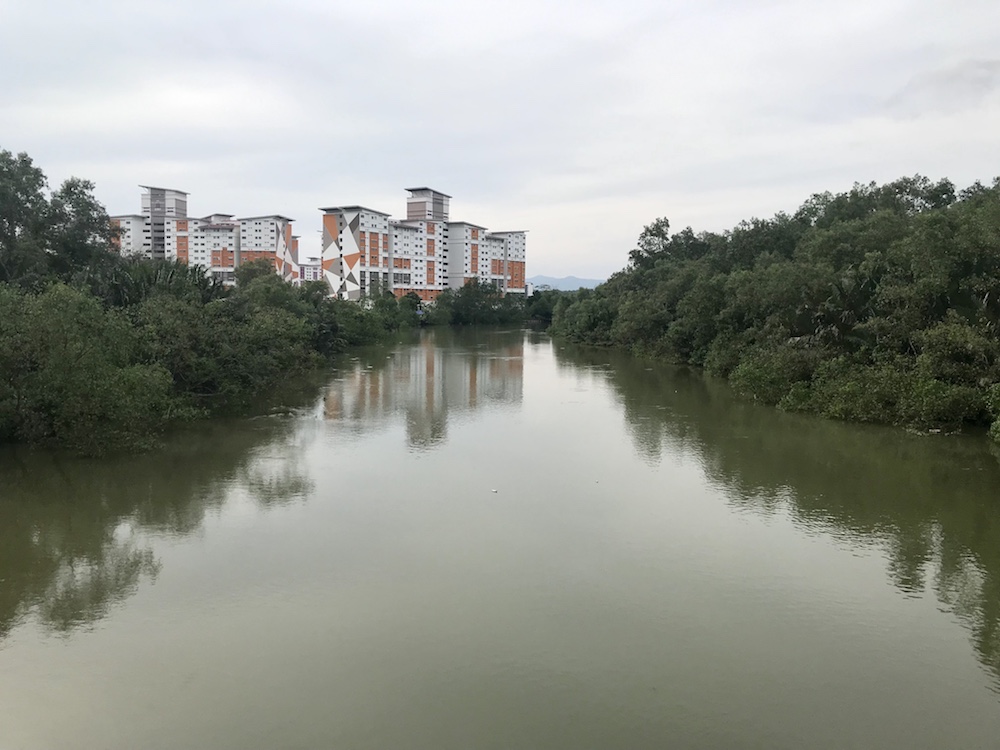JOHOR BARU, Jan 14 — The Malaysian Nature Society (MNS) has urged the government to look into a popular bottom-feeding aquarium fish known locally as “ikan bandaraya” that may pose a threat to Malaysian fish species and the country’s riverine ecosystem.
MNS vice-president Vincent Chow said the popular sucker fish, which also goes by the name of Amazon sailfin catfish, is sought after for its ability to clean fish ponds and aquariums of algae and sediment.
“The bad news is, once these fish have performed their ‘duty’, they are unceremoniously dumped into drains or rivers.
“They have a habit of burrowing into the ground or riverbanks, sometimes a few feet deep, to lay eggs. Their burrowing weakens the riverbanks and contributes to erosion and sedimentation,” Chow told Malay Mail.
First reported in Malaysia in 2006, ikan bandaraya — named after janitorial municipal councils — or known by its scientific name Pterygoplichthys pardalis is not an indigenous fish.
This invasive species possesses a very high tolerance for poor water conditions, often dominating the ichthyofauna of polluted, hypoxic waters with rich organic load.
The absence of predators for the adult sizes also favours its reproduction and proliferation in novel environments.
Chow said the fish was initially recommended to be stocked in oxidation ponds to act as a cleaning agent as it is an alga-feeder (algivore).
“Escapees form part of the population that is now blighting our freshwater ecosystem, especially in rural areas.
“The ikan bandaraya is a hardy and tough fish that will compete with other local riverine fish for food,” said Chow.
In addition, he said scientists have reported that males burrow into riverbanks to allow females to lay and guard their eggs.
In large numbers, he said this burrowing behaviour contributes to problems with siltation and the burrows potentially destabilise the banks, leading to an increased rate of erosion.
“In fact, I highlighted the problem about 10 years ago and the risks that these fish posed for the country,” he said.
According to Chow, the ikan bandaraya reproduce at a rapid rate and a local study at Sungai Ulu Langat in Selangor found that the females outnumber the males 2:1.
“With a reported ability to lay up to 15,000 eggs, even at 50 per cent hatchability, we can envisage how a river system can be filled by this invasive alien species in no time,” he said.

Chow said another recent study of the 46km Sungai Skudai in Johor has indicated that at least 10 metric tonnes of this sailfin catfish were recovered over 22km of the mid-stretch.
“Suffice to say, they have displaced indigenous species. In all those recipient areas recorded so far, aquarists are to blame for releasing them into natural ecosystems and their subsequent establishment,” he added.
He added that there are no known predators for the ikan bandaraya as a means to eliminate them.
“We can’t even eat them, and they are not reared as aquarium fish like, say, goldfish.
“What the state government or municipal councils can do to rehabilitate our rivers is have a competition to catch the fish in exchange for a reward,” he said, adding that educating the public as well as aquarists and fish breeders about the dangers of the sucker fish was just as important.
However, Chow believed that not many aquarists are aware of the negative impact that ikan bandaraya have on the ecosystem, as the fish continues to be dumped into our waterways.
Meanwhile, exotic fish enthusiast Effendi J. from Taman Daya here said the dumping of the fish into lakes and drains was a normal practice among aquarium owners.
The 38-year-old civil servant said ikan bandaraya had long established itself as the most common scavenger fish among local aquarists due to its affordability and adaptability to a variety of water conditions.
“All aquarists have at one time or another kept ikan bandaraya,” he said.
Based on his experience, Effendi said the fish grew in size after three to four months, and then started attacking other fish in his aquarium.
“That’s when the problem starts. So, I dump them once they have done their work,” he said, adding that he will then source for younger sucker fish that only cost about RM3 to RM5 at the aquarium shop.



















